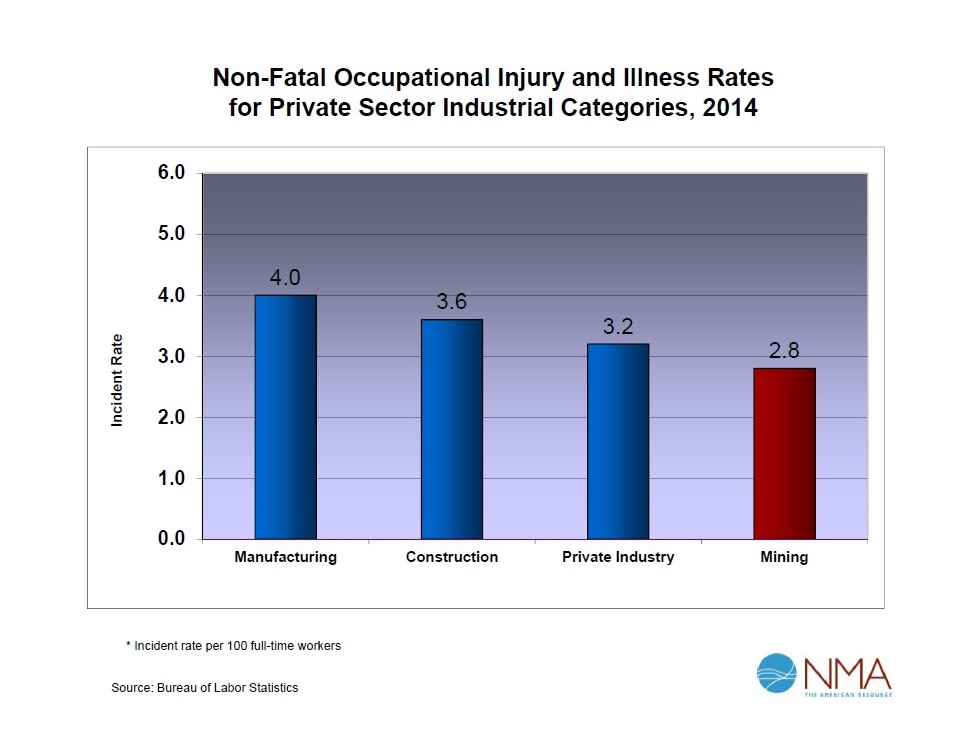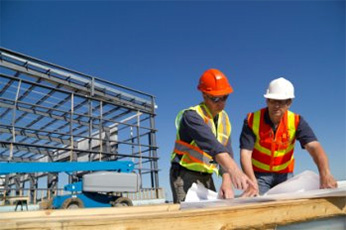Mining Safety
Mine safety involves the dangers that coal miners are exposed to, from chronic exposure to coal dust and other airborne particles to the risks from coal mining disasters, such as mine explosions and collapses. Training plays a fundamental role in the Mine Safety and Health Administration's (MSHA's) effort to help protect the American miner from illness and injury on the job. Inspections alone cannot keep mines accident-free. Miners and their supervisors need knowledge in order to stay safe and healthy. They must be aware of how to perform their jobs safely, and must learn to recognize and control hazards in their work places.
Training can provide these key skills and knowledge. MSHA offers many different types of training assistance to the mining industry and to labor, including special assistance for small mining operations where safety and health training needs have been identified. At small mines (5 or fewer miners), which generally have a higher fatality rate than larger operations, selected MSHA training specialists provide specific training assistance to management and workers.
MSHA education and training officials also contribute significantly to the development of programs to assist mine operators in complying with Federal miner training requirements. Among other types of assistance, MSHA helps the industry with periodic mine rescue contests that test and improve skills of mine rescue and first aid teams that someday may be called upon during a mine emergency to carry out some of the most difficult emergency rescue work undertaken in this country.
The Mine Act and Mandatory Training
The Federal Mine Safety and Health Act of 1977 (Mine Act) establishes training as an important tool for preventing accidents and avoiding unsafe and unhealthy working conditions. The Mine Act authorizes MSHA to "expand programs of education and training of operators...and miners..." MSHA requires that each U.S. mine operator have an approved plan for miner training.
This plan must include:
- 40 hours of basic safety and health training for new miners who have no underground mining experience, before they begin work underground;
- 24 hours of basic safety and health training for new miners who have no surface mining experience, before they begin work at surface mining operations;
- eight hours of refresher safety and health training for all miners, each year; and
- safety and heath related task training for miners assigned to new tasks.
MSHA's National Mine Health and Safety Academy (Mine Academy) near Beckley, WV, is the world's largest educational institution devoted solely to safety and health in mining. The Academy serves as the central training facility for federal mine inspectors, mine safety professionals from other government agencies, the mining industry, and labor.
Courses are offered on safety and health inspection procedures, accident prevention, investigations, industrial hygiene, mine emergency procedures, technology, management techniques, and other topics.
Besides providing classroom instruction, the Mine Academy staff produces DVDs, films, publications, and a wide variety of technical materials and training products. The Mine Academy also provides field training and serves as a technical resource to help meet the mining community's safety and health instructional needs. The Technical Information Center and Library provide the mining community and safety and health professionals with comprehensive and integrated information services.
The Mine Academy's physical plant has classrooms, a simulated mine, laboratories that can accommodate up to 600 students, a large auditorium, a cafeteria, a gymnasium, and a residence hall with dormitory space for over 174 persons.


